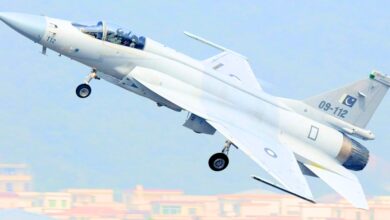
Investment falls to its lowest point in 50 years.
Pakistan’s investment ratio dropped to its lowest point in 50 years, making up only 13.1% of the economy’s size in the past fiscal year. This happened even though the Special Investment Facilitation Council (SIFC) tried to increase investment. These numbers were confirmed by the National Accounts Committee (NAC).
Pakistan’s investment in its economy has reached its lowest point in 50 years, making up only 13.1% of the economy’s size in the past fiscal year. This drop highlights concerns that the Special Investment Facilitation Council (SIFC) alone cannot significantly boost investment without addressing fundamental issues in Pakistan’s economy and achieving political stability.
Official data also revealed a discrepancy in the population figures used by the Pakistan Bureau of Statistics (PBS). This led to an overstatement of per capita income for the outgoing fiscal year. The PBS used an outdated population figure, which resulted in an overestimation of per capita income by $90.
Investments and savings as a percentage of Pakistan’s economy have remained below official targets for the outgoing fiscal year. This has contributed to external sector crises.
Despite efforts by the SIFC to increase investment, Pakistan’s investment-to-GDP ratio fell to 13.1%, the lowest in 50 years. This ratio has not been this low since the fiscal year 1973-74.
The SIFC, established by the Pakistan Democratic Movement (PDM) government, aimed to boost investment and remove obstacles hindering economic growth. However, these efforts have not yielded significant results.
Foreign and domestic investment remains low, with the investment-to-GDP ratio significantly below that of regional peers. Even assurances of a $5 billion investment injection from Saudi Arabia have not materialized into concrete agreements.
Private sector investment dropped to 8.7% of the GDP, the lowest level in almost 25 years. Public sector investment also fell, hitting a four-year low.
Frequent changes in taxation policies and biases towards the manufacturing sector have reduced investment. Economic growth is largely driven by consumption rather than productivity.
The government’s inability to increase investment has limited its ability to address infrastructure and social sector issues, leading to increased reliance on loans for development projects.
The failure to achieve crucial investment targets indicates a lack of progress in addressing structural imbalances in the economy.
Savings as a percentage of GDP slightly decreased and fell short of official targets.
The size of Pakistan’s economy increased to $373.6 billion in the current fiscal year, up from $338.2 billion in the previous year. However, it is still lower than two years ago due to subsequent devaluations.
Per capita income increased to $1,674, but this figure is overstated due to incorrect population figures. According to the last population census, Pakistan’s population should be higher, leading to an overstatement of per capita income by about $90.






